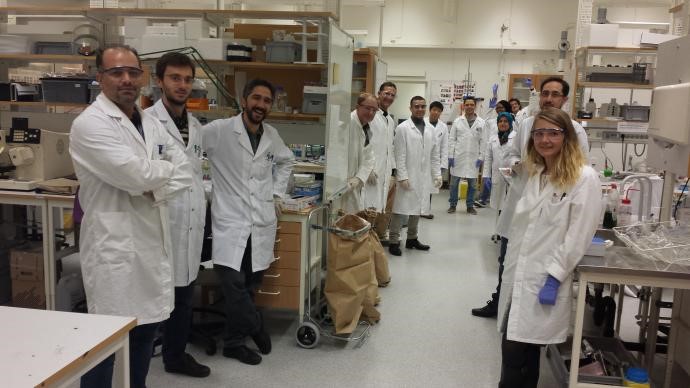
The Team
| Martin Wing Cheung Mak |
Associate Professor and Head |
wing.cheung.mak@liu.se |
| Ingemar Lundström | Professor Emeritus | ingemar.lundstrom@liu.se |
| Lingyin Meng | PhD student | lingyin.meng@liu.se |
| Shengyuan Zeng | PhD student | shengyuan.zeng@liu.se |
| Chengyu Hao | PhD student | chengyu.hao@liu.se |
| Kim Olesen | Co-supervised PhD student | kim.olesen@his.se |
| Tawatchai Kangkamano | Visiting PhD student | tawatchai.kangkamano@liu.se |
| Sinan Uzunçar | Visiting PhD student | sinanuzuncar@hotmail.com |
| Zeynab Mousavi | Visiting PhD student | z.mousavisani@yahoo.com |
| Jun'ya Tsutsumi | Visiting PhD student | junya.tsutsumi@aist.go.jp |
| Erik Eriksson | Master student | erier962@student.liu.se |
| Jenny Lysell | Master student | jenly330@student.liu.se |
| Henrik Larsson | Master student | henla565@student.liu.se |
| Kristian Samaan | Master student | krisa748@student.liu.se |
| Kwan Yee Cheung | Research Engineer | kwan.yee.cheung@liu.se |
| Anette Andersson | Research Administrator | anette.andersson@liu.se |
Our research activity is divided into four main streams
1) Facile and green synthesis of processable organic and bio-organic colloidal materials; 2) Bio-conducting polymer materials for biosensors and printable bioelectronics; 3) Biomaterials and microcapsules for drug delivery and stem cell regenerative medicine; 4) Microstructured processable conducting polymers for printable supercapacitor and energy storage.1) Facile and green synthesis of processable organic and bio-organic colloidal materials
This research team has developed several advance methods for the fabrication of various processable colloidal materials ranging from structural protein, enzymes, antibodies, conducting polymers (e.g. polypyrrole and poly 3,4-ethylenedioxythiophene (PEDOT), and recently an advance bio-conducting polymer hybrid materials composed of enzyme and conducting polymers. Our research strategy is focused on facile and green chemistry for the bulk synthesis of processable functional materials with controllable chemical properties and nano/microstructure morphologies. This enables us to design new materials and study theirs synergetic effect on chemistry, morphology and internal structural organization of colloidal materials, which is important for understanding the complex physicochemical phenomena occurring at the nano/microstructured material, as well as utilizing the new materials to explore on applications for biosensing, biomedical and energy storage.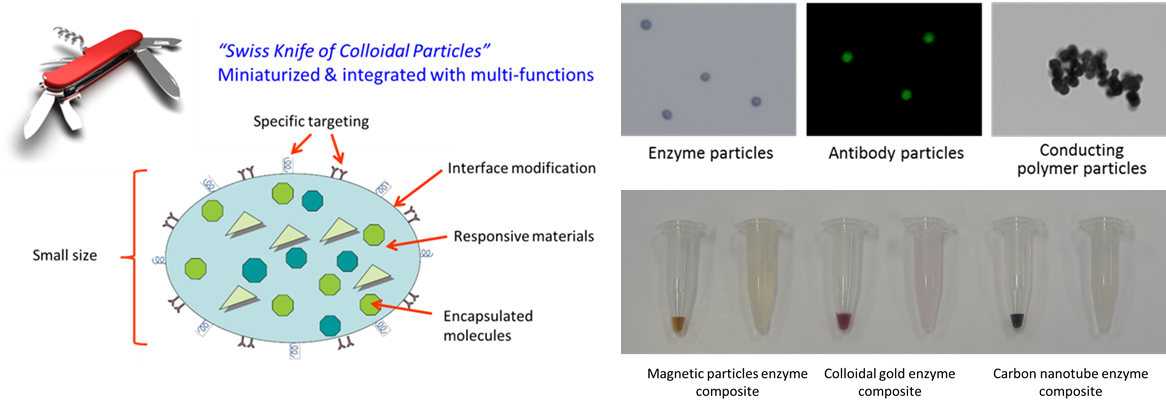
Selected Publications:
- K.K. Lai, R. Renneberg, W.C. Mak*, High efficiency single-step biomaterial-based microparticle fabrication via template-directed supramolecular coordination chemistry, Green Chemistry, 18, 1715-1723, 2016.
- M.Y. Vagin, I. Jeerapan, R. Wannapob, P. Thavarungkul, P. Kanatharana, N. Anwar, T. McCormac, M. Eriksson, A.P.F. Turner, E.W.H. Jager, W.C. Mak*, Water-processable polypyrrole microparticle modules for direct fabrication of hierarchical structured electrochemical interfaces, Electrochimica Acta, 190, 495-503, 2016.
- K.K. Lai, R. Renneberg, W.C. Mak*, Bioinspired protein microparticles fabrication by peptide mediated disulfide interchange, RSC Advances, 11802–11810, 2014.
- K.K. Lai, R. Renneberg, W.C. Mak*, Multifunctional protein particles with dual analytical channels for colorimetric enzymatic bioassays and fluorescent immunoassays. Biosensors and Bioelectronics 32, 169-176, 2012.
- W.C. Mak*, R. Georgieva, R. Renneberg, H. Bäumler, Protein particles formed by protein activation and spontaneous self-assembly. Advanced Functional Materials, 20, 4139-4144, 2010.
2) Bio-functionalized materials for biosensors and printable bioelectronics
Our research focus is on the development of bio-hybrid conducting polymers, and microparticle modules hetero-structured bioelectronics for printable bioelectrodes, investigate the intrinsic electrical and ionic conductivity of the conducting polymers, hierarchical organization of electrode materials, and understand the signal transduction mechanism at the bio-traducer interfaces. Recently, we developed a new method to synthesize water processable enzyme-hybrid conducting polymer microparticles as printable materials for biosensors construction. For printed bioelectronics, my research strategy is focus on a modular construction of hetero-structured bioelectronic interfaces by using tailored functional “biological microparticles” combined with “transducer microparticles” as modular building blocks. This approach offers high versatility for the design and fabrication of printable bioelectrodes with a variety of forms of inter-particle spatial organization, from layered-structures to more advance bulk hetero-structured architectures with enhanced electrode reaction kinetics. We also explore the deposition of the functional colloidal materials on flexible substrates for printed paper-based and fabric-based device. Our ultimate goal is to combine the classical printed electronics and 3D prototyping to develop fully-printable biosensors and biomedical devices which can be tailored made for personalized healthcare monitoring and treatment.
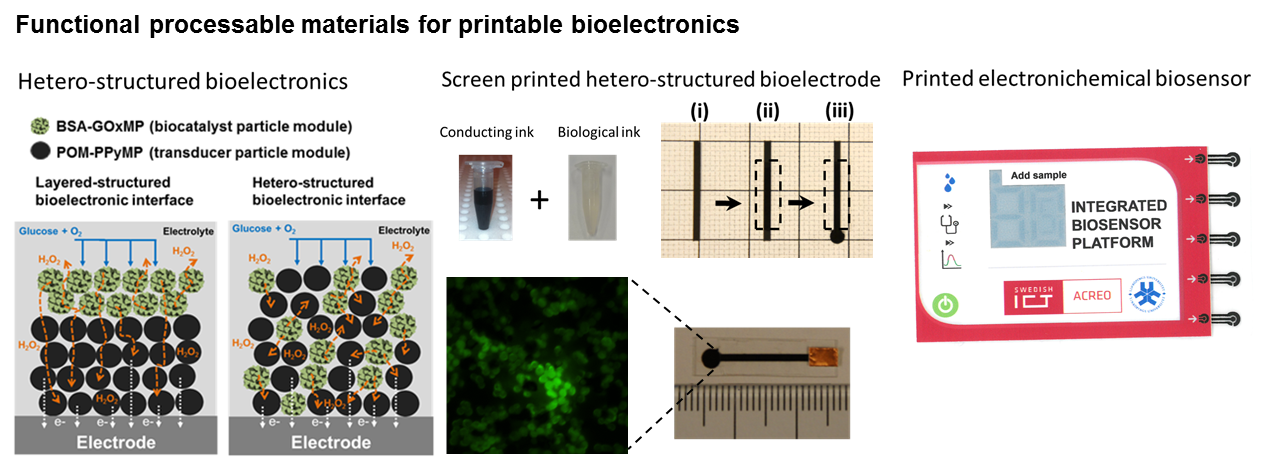
Selected Publications:
- Y. Liu, A.P.F. Turner, M. Zhao, W.C. Mak*, Processable enzyme-hybrid conductive polymer composites for electrochemical biosensing, Biosensors and Bioelectronics, 100, 374-381, 2018.
- M.F. Santangelo, S. Libertino, A.P.F. Turner, D. Filippini, W.C. Mak*, Integrating printed microfluidics with silicon photomultipliers for miniaturised and highly sensitive ATP bioluminescence detection, Biosensors and Bioelectronics, 99, 464-470, 2018.
- R. Wannapob, M.Y. Vagin, Y. Liu, P. Thavarungkul, P. Kanatharana, A.P.F. Turner, W.C. Mak*, Printable hetero-structured bioelectronic interfaces with enhanced electrode reaction kinetics via inter-microparticle network, ACS Applied Materials & Interfaces, 9(38), 33368-33376, 2017.
- Z. Fredj, S. Azzouzia, A.P.F. Turner, M.B. Ali, W.C. Mak*, Neutravidin biosensor for direct capture of dual-functional biotin - molecular beacon - AuNP probe for sensitive voltammetric detection of microRNA, Sensors & Actuators: B Chemical, 248, 77-84, 2017.
- K. Kor A.P.F. Turner, K. Zarei, M. Atabati, V. Beni, W.C. Mak*, Structurally responsive oligonucleotide-based single-probe lateral-flow test for detection of miRNA-21 mimics, Analytical and Bioanalytical Chemistry, 408, 1475-1485, 2016.
- W.C. Mak*, K.Y. Cheung, J. Orban, C.J. Lee, A.P.F. Turner, M. Griffith, Surface-engineered contact lens as an advanced theranostic platform for modulation and detection of viral infection, ACS Applied Materials & Interfaces, 7 (45), 25487-25494, 2015.
- W.C. Mak, R. Selegård, M. Garbrecht, D. Aili, Probing Zinc–Protein–Chelant Interactions Using Gold Nanoparticles Functionalized with Zinc-Responsive Polypeptide, Particle & Particle Systems Characterization, 31 (11), 1127-1133, 2014.
3) Biomaterials and microcapsules for drug delivery, stem cell regenerative medicine
Our research principle on biomedical application is focus on biocompatibility and green chemistry for the facile fabrication of pure biomaterial-based drug carriers with supramolecular self-assembly and bio-assisted crosslinking approaches. We have initiated a pioneer research on protein-based particle for follicular transdermal drug delivery with Prof. Lademann at Charité Hospital University-Berlin, with focus on new skin diseases treatment via follicular drug delivery, drug storage and controlled drug release, sebaceous gland targeting, and more recently on follicular theranostics (therapy and diagnostics) with multifunctional microparticles composed of sensing and therapeutic agents. Besides, we have collaboration with Prof. Bäumler at the Institute of Transfusion Medicine, Charité Hospital University on fabrication of pure hemoglobin particles as artificial oxygen carrier for be potentially used for transfusion medicine.
Our recent research expanded towards stem cell delivery for regenerative medicine. Cell therapy is one of the most promising areas within regenerative medicine, while its full potential is limited by the rapid loss of introduced therapeutic cells. Our research interest is to design and fabricate biocompatible responsive capsules to improve the delivery efficiency, stem cell survival and controlled release of stem cells to the target tissue using human mesenchymal stroma cells (MSCs) model. We have recently reported using thermo-rheological responsive capsules for time-dependent controlled release of MSCs. With this success, we am moving towards in vivo studies on the therapeutic effect of the encapsulated MSCs in collaboration with Karolinska Institute.
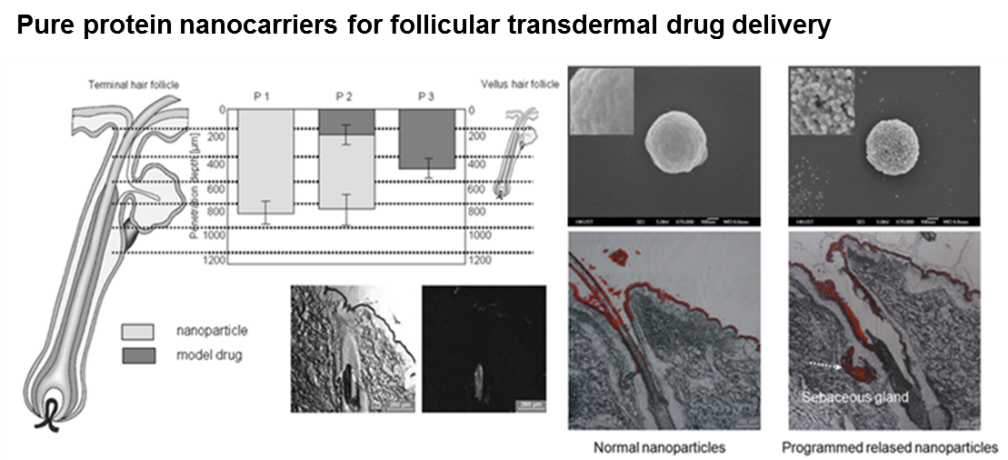
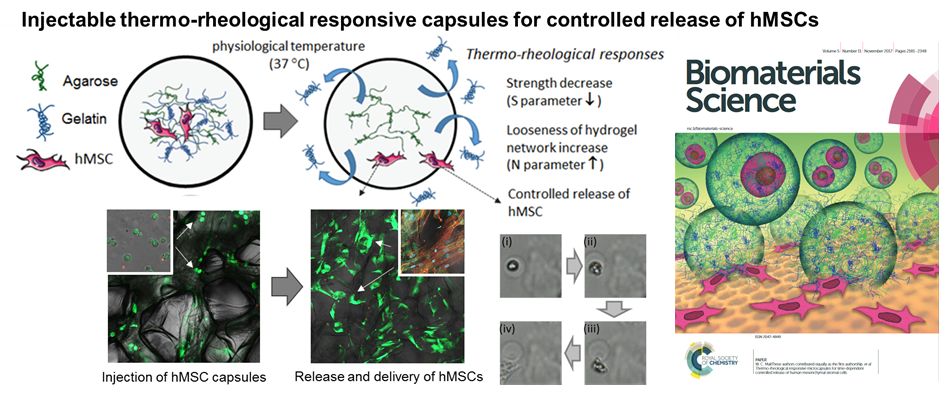
Selected Publications:
- W.C. Mak*, B. Magne, K.Y. Cheung, D. Atanasova, M. Griffith, Thermo-rheological responsive microcapsules for time-dependent controlled release of human mesenchymal stem cells, Biomaterials Science, 5, 2241-2250, 2017. (Front cover article)
- A. Patzelt, W.C. Mak, (equal first author contribution) S. Jung, F. Knorr, M.C. Meinke, H. Richter, E. Rühl, K.Y. Cheung, N.N. Tran, J. Lademann, Do nanoparticles have a future in dermal drug delivery? Journal of Controlled Release, 246, 174-182, 2017.
- J. Lademann, H. Richter, F. Knorr, A. Patzelt, M.E. Darvin, E. Rühl, K.Y. Cheung, K.K. Lai, R. Renneberg, W.C. Mak*, Triggered release of model drug from AuNP-doped BSA nanocarriers in hair follicles using IRA radiation, Acta biomaterialia, 30, 388-396, 2016.
- W.C. Mak*, K. Olesen, P. Sivlér, C.J. Lee, I. Moreno-Jimenez, J. Edin, D Courtman, M Skog, M Griffith, Controlled delivery of human cells by temperature responsive microcapsules, Journal of Functional Biomaterials, 6 (2), 439-453, 2015.
- W.C. Mak*, A. Patzelt, H. Richter, R. Renneberg, K.K. Lai, E. Rühl, W. Sterry, J. Lademann, Triggering of drug release of particles in hair follicles. Journal of Controlled Release, 160, 509-514, 2012.
- W.C. Mak*, H. Patzelt, W. Sterry, K.K. Lai, R. Renneberg, J. Lademann*, Drug delivery into the skin by degradable particles. European Journal of Pharmaceutics and Biopharmaceutics, 79, 23-27, 2011.
4) Microstructured processable conducting polymers for printable capacitors and energy storage
For energy materials, our research focus is on the development of processable nano/microstructured conducting polymers, understanding the morphology, chemical doping effect, porosity and structural organization of the electrode materials to enhance electrocapactive kinetics, ions transport and ion-exchange processes. The team has developed various processable polypyrrole and PEDOT colloids with controllable nano-scale surface feature and chemical dopants as printable high performance electrode materials with enhanced energy storage capacitance. Our recent direction is to create heterostructured hybrid conducting polymers with synergizing conductivity and capacitance effect for enhance energy storage capacity and cycling stability. To understand the mechanism using advance electrochemistry techniques to distinguish the ionic conductivity and electronic conductivity contributed within the heterostructured hybrid conducting polymers, and investigate the effective ion diffuse length and charge transfer resistance as a measurement of electrode kinetics. Our next step is to fabricate a full supercapacitor device with two electrode components using our developed conducting polymer colloids.
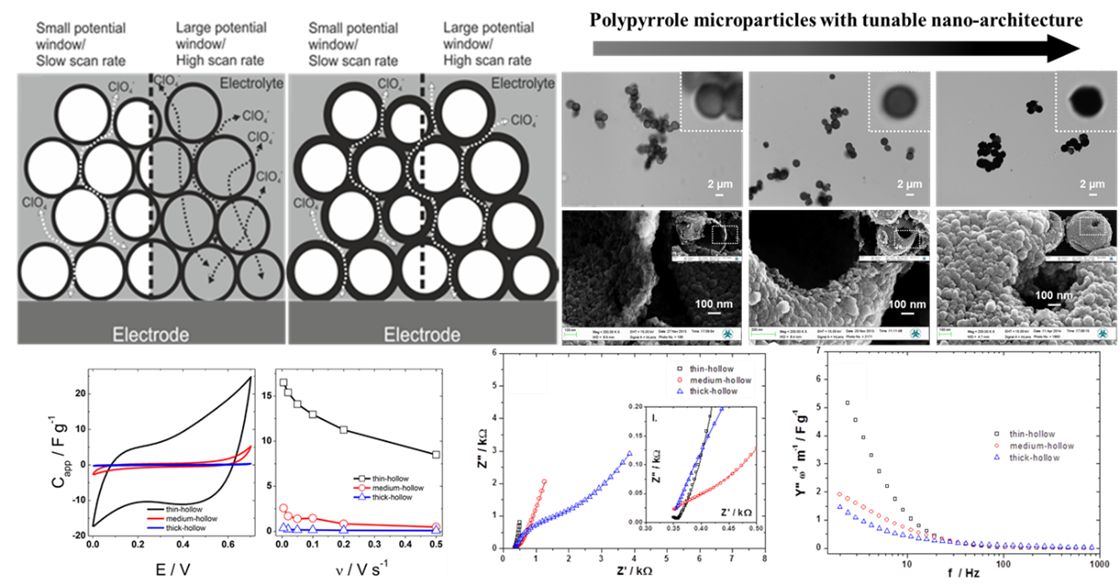
Selected Publications:
- M.V. Vagin, R. Wannapob, Y. Liu, W.C. Mak*, Potential-modulated electrocapacitive properties of soft microstructured polypyrrole, Electroanalysis, 29(1), 203-207, 2017.
- S.Sankoh, M.Y. Vagin, A.N. Sekretaryova, P. Thavarungkul, P. Kanatharana W.C. Mak*, Colloid electrochemistry of conducting polymer: towards potential-induced in-situ drug release, Electrochimica Acta, 228, 407-412, 2017.
- R. Wannapob, M.Y. Vagin, I. Jeerapan, W.C. Mak*, Pure nanoscale morphology effect enhancing the energy storage characteristics of processable hierarchical polypyrrole, Langmuir, 31 (43), 11904-11913, 2015.
News and Activities
Our recent article “Thermo-rheological responsive microcapsules for time-dependent controlled release of human mesenchymal stem cells” was invited as front cover article in Biomaterials Science, 5, 2241-2250, 2017
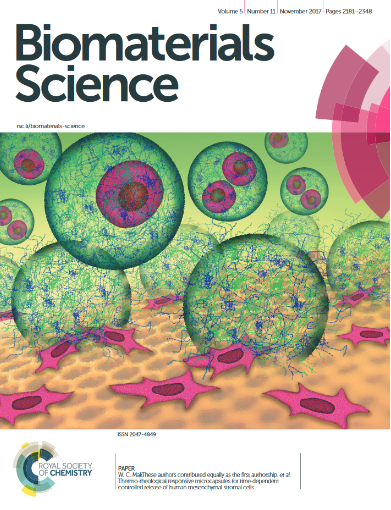 Renovation is on-going for the new Biosensor Lab (30 Sept 2017)
Renovation is on-going for the new Biosensor Lab (30 Sept 2017)
 Fika (Swedish coffee break) time during the summer (26 July 2017)
Fika (Swedish coffee break) time during the summer (26 July 2017)
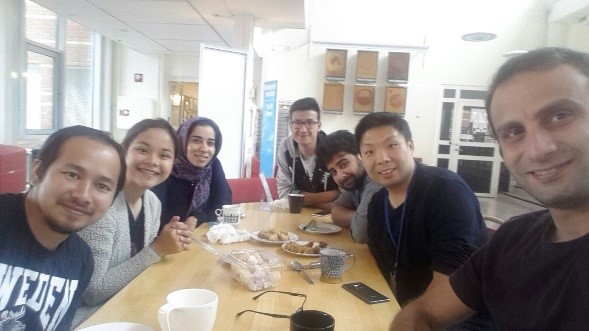 Swedish mid-summer festivities (23 June 2017)
Swedish mid-summer festivities (23 June 2017)
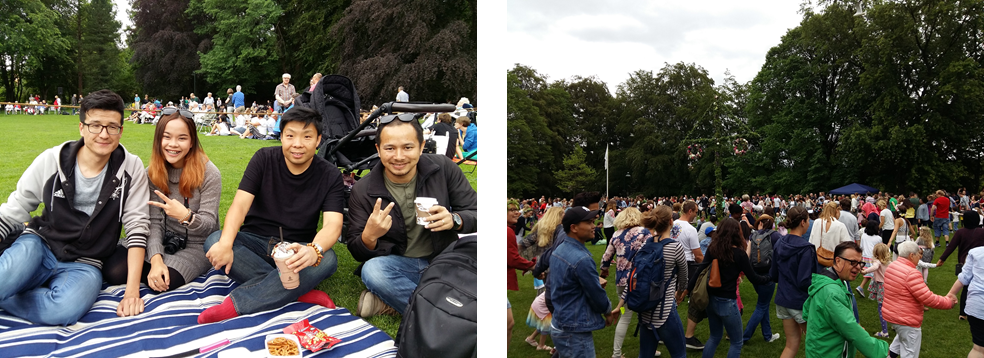 Docent completed (25 April 2017)
Docent completed (25 April 2017)
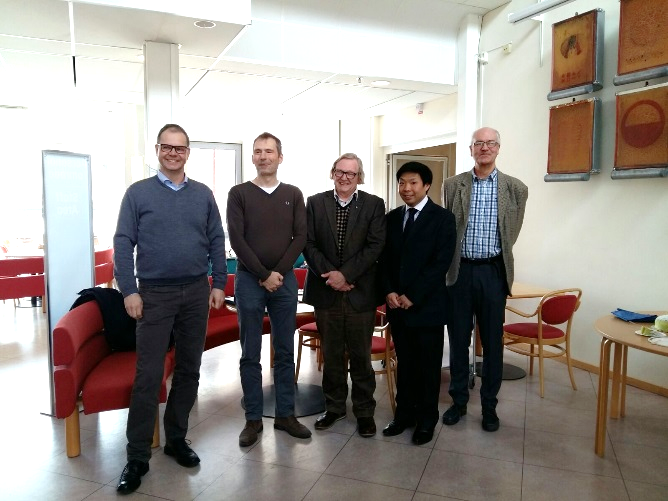 Group picture after lab cleaning (25 July 2016)
Group picture after lab cleaning (25 July 2016)
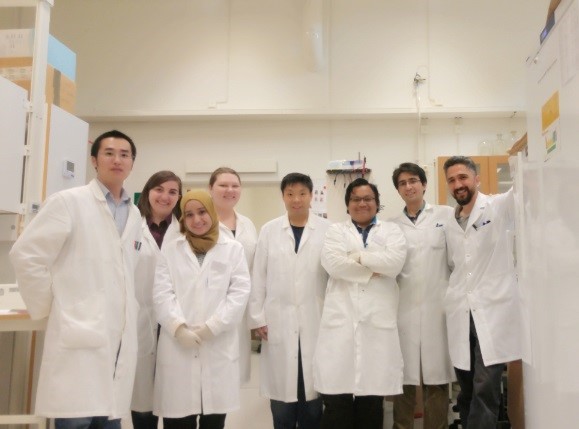 Dr. Martin Wing Cheng Mak is giving a keynote presentation on “Functional microparticles modules for printable bioelectronics” at the Biosensors Congress 2016, Gothenburg, Sweden (25 May 2016)
Dr. Martin Wing Cheng Mak is giving a keynote presentation on “Functional microparticles modules for printable bioelectronics” at the Biosensors Congress 2016, Gothenburg, Sweden (25 May 2016)
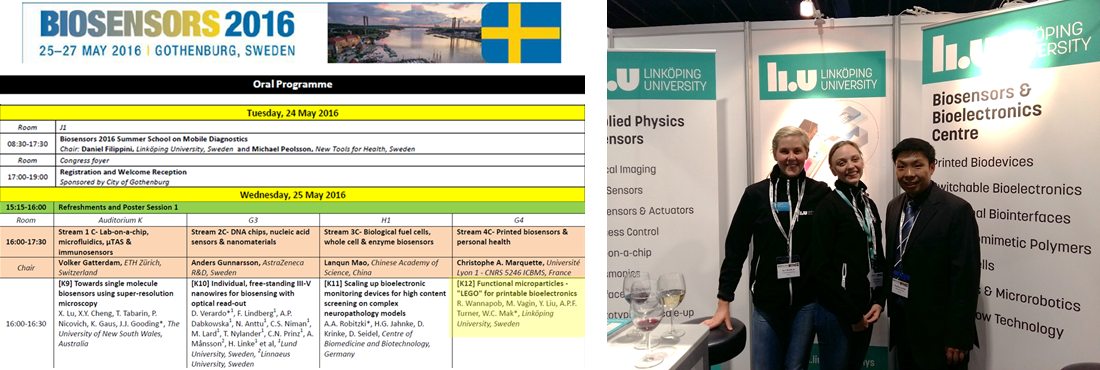 Swedish-Malaysia Symposium at the Biosensor Congress 2016
Swedish-Malaysia Symposium at the Biosensor Congress 2016
